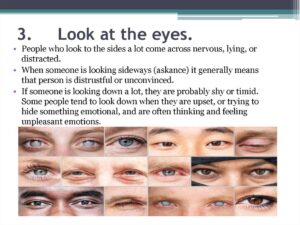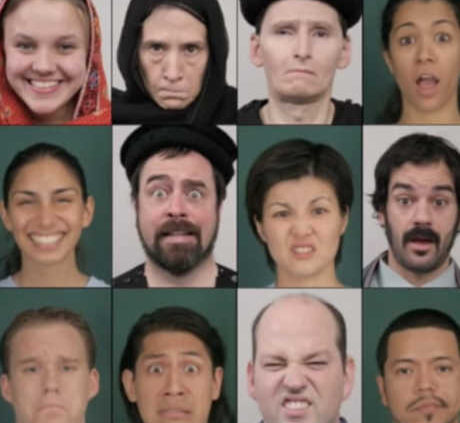Your Facial Expression Communicates
Your Facial Expression Communicates
We’ve been looking at Mehrabian’s 7-38-55 rule over the last several posts. Remember that this rule says that 7% of communication is our words, 38% is our tone of voice, and 55% is our body language. So we’ve been thinking through how our posture speaks, and how our hands communicate. In this post we are going to look at how your facial expression communicates to your audience.
Facial Expression Can Betray Your Message
It’s a funny story. When I lived in California I would practice my message on Sunday mornings by walking the sidewalks around my house, preaching what I would say in church in a couple of hours. It was fairly early, so no one was out, and I considered it the perfect venue to practice. One Sunday morning I noticed a policeman down the block who seemed to be watching me. Then, to my surprise, he pulled his car right up to the curb where I was walking and got out of his car. He asked, “How are you doing?” I replied that I was doing fine. Then he said, “I noticed that you seem to be talking to yourself, and sometimes you look pretty angry.”
I explained to him what I was doing, and he let me go. But it was that last phrase that struck me. I was looking pretty angry? That isn’t what I wanted to express to the people in my church, and it didn’t really connect with the words I was saying, though that sermon was likely a bit serious. That’s when I realized in a renewed way that your facial expression communicates powerfully.
What Does Your Face Say?
For most of us, I suspect, a serious expression when we are preaching is natural. As I began to take note of my facial expressions, I began to realize that many times I was forgetting to smile.
Here are some facial expressions that you can practice when you preach:
Delight
 This past Sunday I preached, and in the conclusion I used what the author (whose name I can’t remember) called “A Prayer for the Morning”. It goes like this: “Dear God, today I’m doing pretty well. I haven’t gossiped today, or lied, or lost my temper, or overindulged in any way.” Then, with pretty good timing, I paused. Then I delivered the last line: “But now I’m going to get out of bed, and I really need your help.” People laughed. So, I smiled.
This past Sunday I preached, and in the conclusion I used what the author (whose name I can’t remember) called “A Prayer for the Morning”. It goes like this: “Dear God, today I’m doing pretty well. I haven’t gossiped today, or lied, or lost my temper, or overindulged in any way.” Then, with pretty good timing, I paused. Then I delivered the last line: “But now I’m going to get out of bed, and I really need your help.” People laughed. So, I smiled.
A smile can communicate joy and delight. Make sure you include that in your repertoire of facial expressions, because your facial expression communicates to your audience.
A Frown
Similarly, a frown can communicate as well. When you are talking about something that is sad or disappointing, people would expect a frown.  When you talk about the condition of the world today, our faces should express a deep sadness. I once watched a video of David Platt talk about people going into the mountains of Nepal and paying parents to take their young children. The parents are told that the children are going to be brought to the capital to become servants. They actually became sexual slaves, serving the perverted sexual needs of men. He appropriately frowned, and his voice broke. It was an appropriate physical expression of the words he was using, and his expression added great power to his words as he pleaded for us to correct this outrage.
When you talk about the condition of the world today, our faces should express a deep sadness. I once watched a video of David Platt talk about people going into the mountains of Nepal and paying parents to take their young children. The parents are told that the children are going to be brought to the capital to become servants. They actually became sexual slaves, serving the perverted sexual needs of men. He appropriately frowned, and his voice broke. It was an appropriate physical expression of the words he was using, and his expression added great power to his words as he pleaded for us to correct this outrage.
A Furrowed Brow
 A furrowed brow can communicate a question, something you don’t quite understand. I know one man who was preaching about the fact that Jesus said, “By this everyone will know that you are my disciples, if you love one another.” (John 13:5) Then the question was asked, “Why do people in the United States say that they think we are angry, hypocritical, judgmental, and unconcerned about the people around us?” His brow was appropriately furrowed.
A furrowed brow can communicate a question, something you don’t quite understand. I know one man who was preaching about the fact that Jesus said, “By this everyone will know that you are my disciples, if you love one another.” (John 13:5) Then the question was asked, “Why do people in the United States say that they think we are angry, hypocritical, judgmental, and unconcerned about the people around us?” His brow was appropriately furrowed.
Eyes
When something is surprising, you open your eyes wide. When something is solemn, lower your eyes. These things  communicate!
communicate!
Here is the bottom line: your facial expression communicates as you preach. The best facial expressions are natural, they follow closely what we are thinking about. Record yourself preaching and see if you are serving your congregation well by having your facial expressions track with your words.



